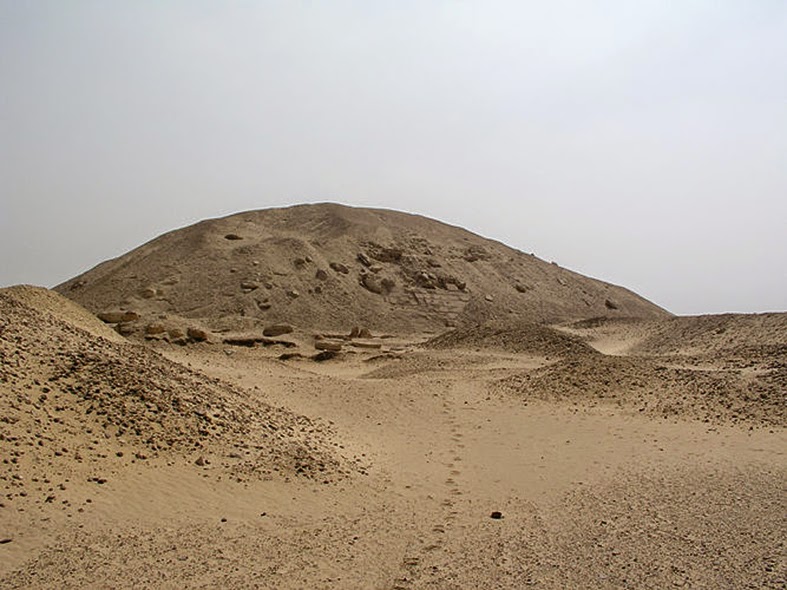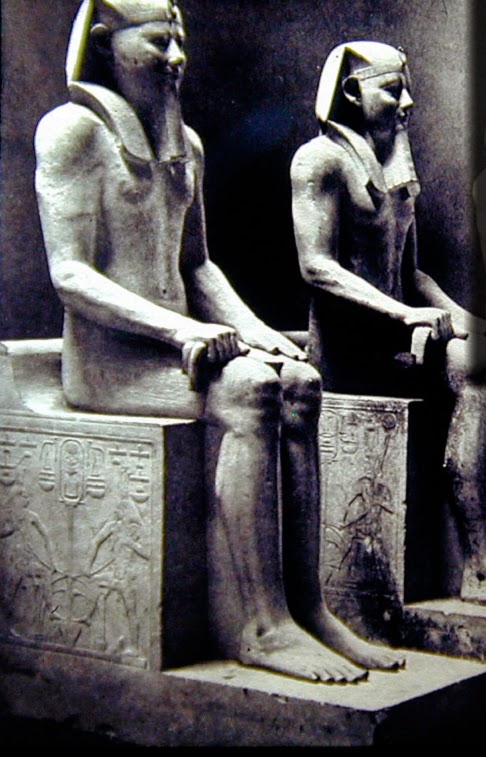Pectoral of Tutankhamun:
1- This is a Pectoral, or chest ornament, which was worn by both men and women. It was discovered intact in the tomb of Tutankhamun. The piece depicts Scarab Beetles or Khepri, pushing the sun.
Khepri was believed to be a Sun god by the ancient Egyptians, and was represented as a scarab beetle. The jewel is also decorated with inlaid lotus blossoms, which hang at the bottom.
1- This is a Pectoral, or chest ornament, which was worn by both men and women. It was discovered intact in the tomb of Tutankhamun. The piece depicts Scarab Beetles or Khepri, pushing the sun.
Khepri was believed to be a Sun god by the ancient Egyptians, and was represented as a scarab beetle. The jewel is also decorated with inlaid lotus blossoms, which hang at the bottom.
2- Winged Scarab Pectoral of Tutankhamun:
Winged Scarab Pectoral of Tutankhamun, is filled with symbolism, made with semi-precious stones (carnelian, lapis lazuli, glass,) and with a lotus blossom fringe.
The symbols of the Ankh and the Eye of Horus (Udjat) are among the most used in ancient Egyptian Art.
3- Golden pendant of Tutankhamun:
This pendant made with a method called Cloisonné and inlaid with semiprecious stones and colored glass. It is full of symbols and hieroglyphs.
The central element of the composition is a winged scarab with a yellow stone of disputed origin which grasps on one side a lotus and on the other a papyrus flower, flanked by two uraei (cobras.).
A gold frame outlines the main composition and supports pendants of lotus flowers, papyrus, and poppy seed heads.
A slim solar boat rests upon the front feet of the scarab and carries the Udjat eye of Horus, flanked by two cobras. The Udjat eye is surmounted by a lunar crescent of gold and a silver disk with images of the gods, Thoth and Re-Horakhty, crowning the central figure of the king.
4- Tutankhamun’s Necklace with a Pectoral in the Form of a Solar Boat:
This pectoral is centered on a scarab of lapis lazuli, that symbolizes the god, Khepri.
Khepri represents the sun on the horizon of the new day. The scarab holds a solar disc of carnelian surrounded by a gold rim. The beetle is flanked by two baboons with lunar symbols on their heads.
This item was discovered inside an inlaid box of ebony and ivory with an inscription that read: "gold jewelry for the funerary procession from the bedchamber of Nebkheperure.” This was Tutankhamun’s coronation name.
5- Tutankhamun’s Necklace of the Sun on the Eastern Horizon:
The artist who made this Pectoral used the hieroglyphic sign for 'horizon' (akhet), which represents the sun rising between two mountains, with the scarab ( the sun-god) pushing the sun in front of it He has also added uraei (cobras) with pendent 'life' signs (ankh) to the 'horizon' hieroglyph, showing that the rising sun is bringing life to Upper and Lower Egypt.
On the symbol for the sun-god's gold barque (boat) are two uraei, one in the prow and the other in the stern; on their heads are disk of the sun and their tails are replaced by three amulets symbolizing 'goodness' (nefer), 'life' (ankh) and 'stability' (djed).
The straps of the pectoral are made of separate inlaid gold plaques held together at the back and the sides by rows of small gold, carnelian and glass beads. The plaques use the same elements as those in the pendant, except that the sun's disk is substituted for the sign of the horizon, and the hieroglyphic sign for 'festival' is placed beneath the scarab.
6- Gold cuff bracelet of Tutankhamun:
This gold cuff bracelet is composed of two semicircles joined together by a hinge on one side and a clasp on the other.
The central plaque bears a cloisonné scarab inlaid with lapis lazuli. The scarab, symbol of the morning sun, was the most popular motif used in jewelry. The bracelet itself is also inlaid with carnelian, lapis lazuli, turquoise, quartz, and colored glass.
7- A Pectoral of Tutankhamun with Eye of the god Horus:
A Pectoral of Tutankhamun, dominated by the Eye of the god, Horus (the Udjat).

















































.jpg)
.jpg)
.jpg)
.jpg)
.jpg)




